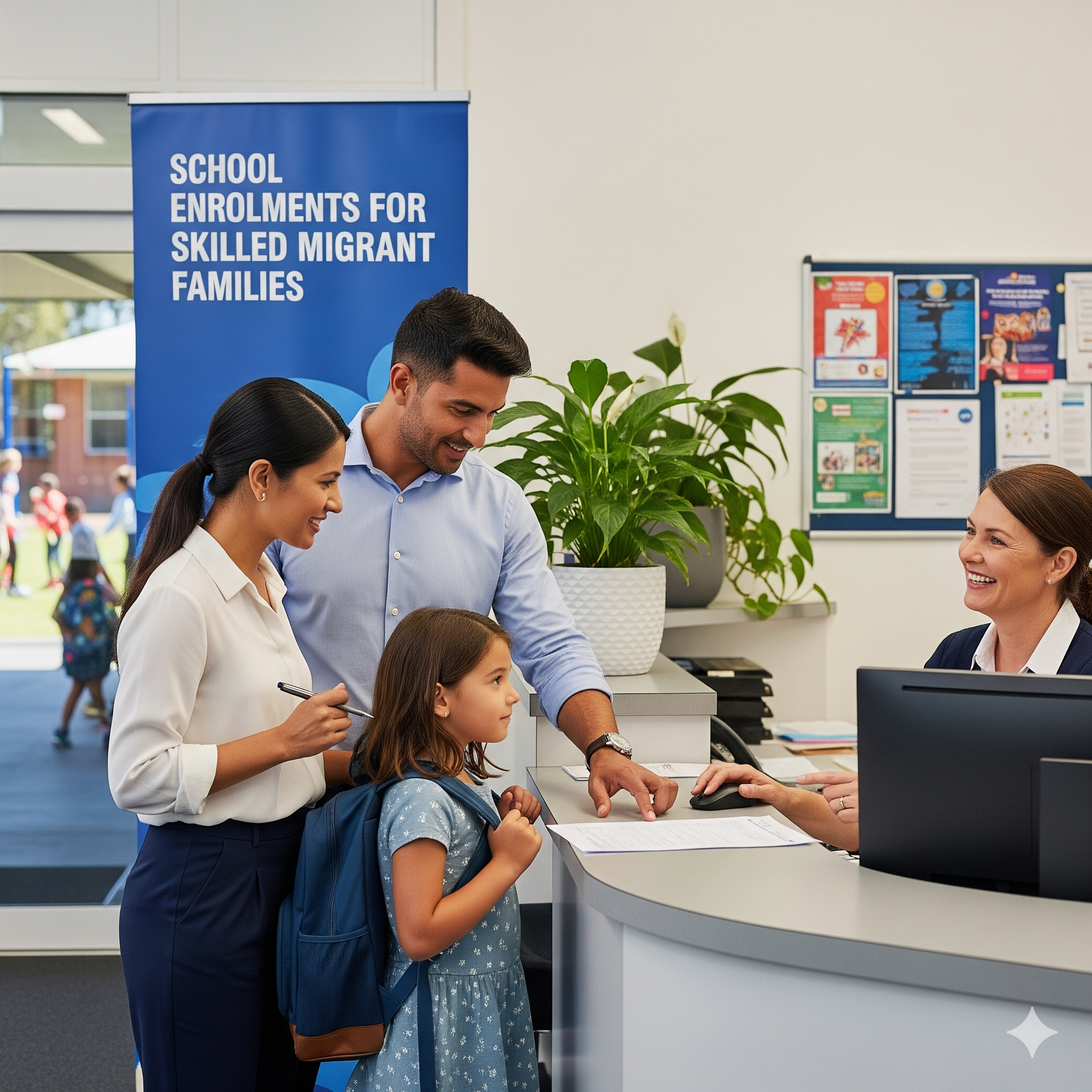Clarify misconceptions about school enrolment for skilled migrant children and learn how to navigate education after migration effectively.
Introduction
Skilled migrant families often face uncertainty about enrolling their children in schools. Several myths about school admission, fees, and eligibility can cause confusion. This article busts common misconceptions and provides clear facts to help migrant families navigate the school enrolment process confidently.
Myth 1: “Skilled migrant children must pay high international school fees”
Many skilled migrants believe their children will automatically be charged international student fees, making education unaffordable. This is not always true.
Correction: Children of skilled visa holders usually qualify as local students in public schools and are entitled to tuition-free education from primary through secondary levels in countries like Australia. While private or independent schools charge fees, public schools prioritize local residents, including the dependents of skilled migrants with valid visas. Proof of visa status and residency is required to confirm fee exemptions.
Myth 2: “You must wait months to enroll your child after migrating”
Some families think there are lengthy waiting lists or strict enrollment periods after arrival.
Correction: Most schools accept enrolments year-round, especially public schools. Skilled migrant families should contact local schools promptly, as many allow mid-term or rolling admissions based on availability. Early communication with the school helps clarify any specific catchment rules or documentation needs. Schools may also provide assessments or orientation sessions to ease the transition.
Myth 3: “Proof of previous academic records is mandatory for enrolment”
It is often assumed that students must submit detailed past school reports or academic transcripts to join a new school.
Correction: While previous academic records can help, schools understand that migrant children may come from varied educational backgrounds. Many public schools offer English as an Additional Language (EAL) support and individualized learning plans to accommodate transitional needs without full academic history. Immunization records and visa documents usually carry more weight during enrolment.
Myth 4: “Children of skilled migrants face restrictive school zoning rules”
Families worry they must only enroll children in schools assigned to their residential catchment, limiting school choices.
Correction: Public schools do use catchment zones, but families can apply to nearby or preferred schools outside their zone. Acceptance depends on availability and sometimes on siblings already attending. Additionally, Catholic and independent schools have more flexible zoning policies and selection criteria, often including interviews or portfolios for admission.
Myth 5: “International skills or curricula won’t be recognized by Australian schools”
Migrant families sometimes fear their child’s previous schooling will not fit with the local curriculum.
Correction: Australian schools have well-established frameworks to integrate international students. They offer credit transfers and tailored support to bridge curriculum gaps, including specialist programs in STEM and the arts. Most states provide smooth transitions, allowing children of skilled migrants to progress appropriately alongside peers.
Conclusion
Navigating school enrolment after migration involves clearing up common misunderstandings. Skilled migrant families benefit from accessible public education, flexible enrollment, and supportive systems tailored to diverse learners. Armed with accurate information, families can confidently secure quality education for their children—and focus on building a successful new life.


